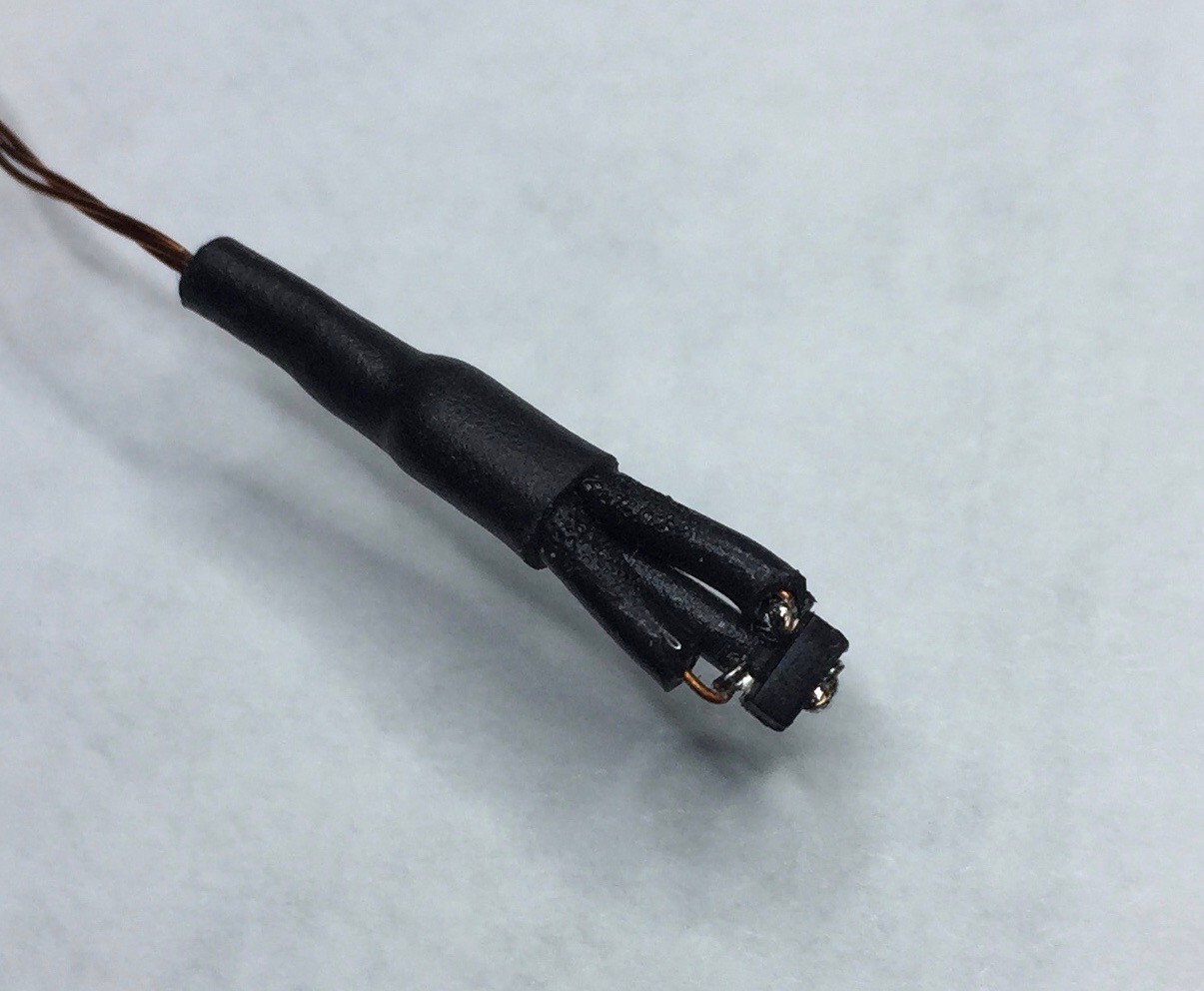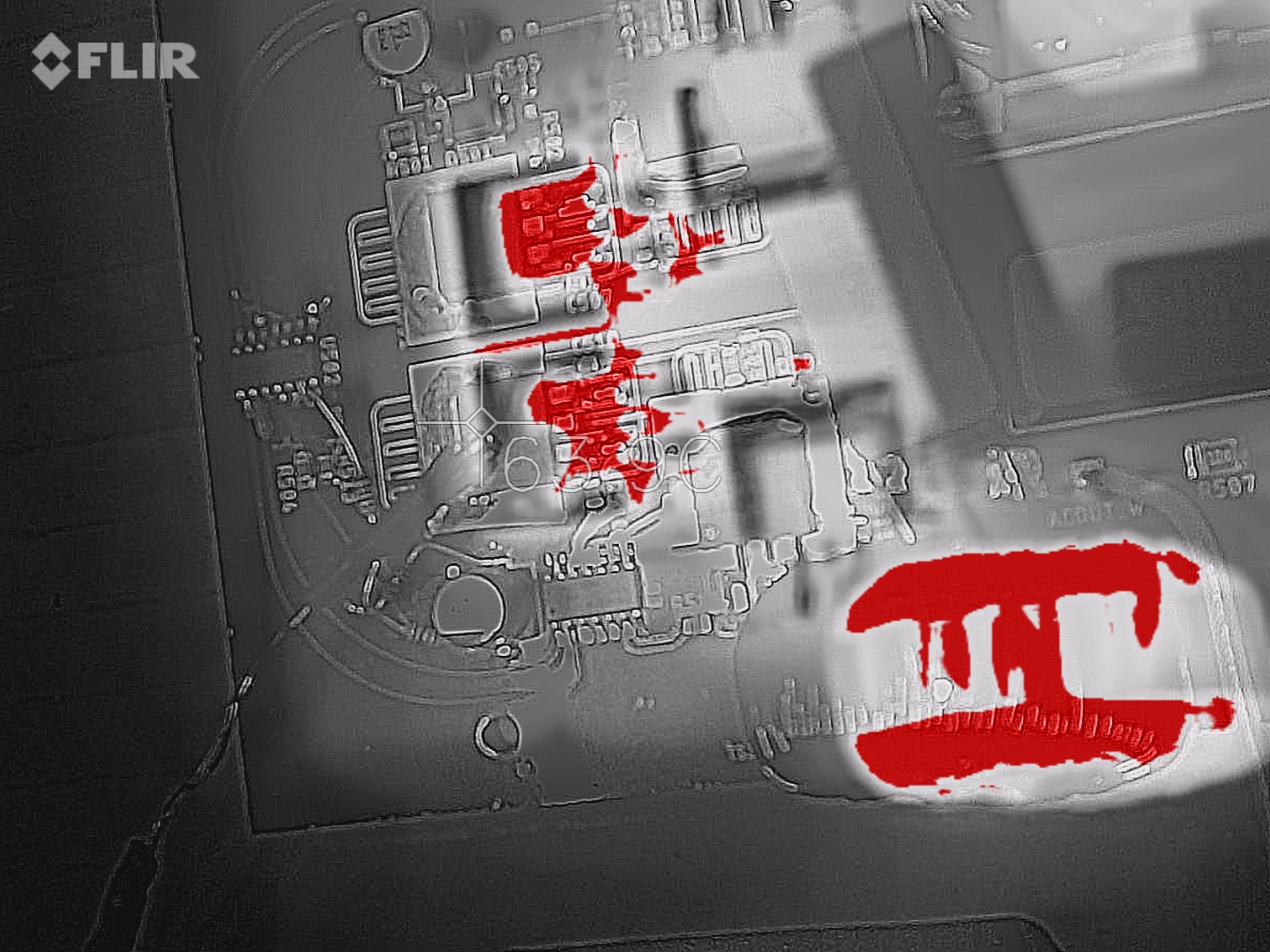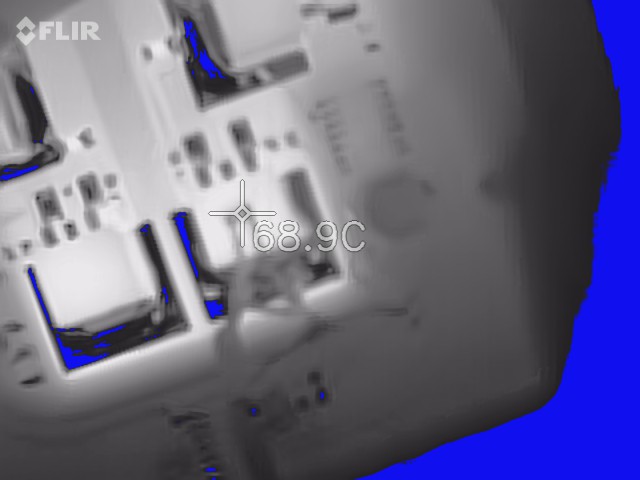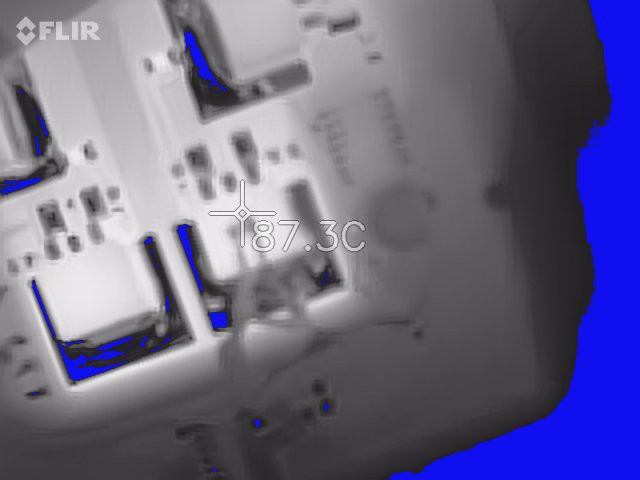An on-going problem I have is getting good temperature data from the hot parts of my designs. I have an IR camera and that is great when things are exposed on the bench but not so much when tucked away or in an enclosure. Thermocouples are fickle and difficult to get accurate readings because of their small, bulbous shape and the resulting difficulty of securing them to a chip without damage.
My redesign of the TS350 project is forcing me to find a solution. It has substantial dissipation and when assembled, even on the bench, the full bridge MOSFETs won't be visible to the IR camera because of the gate driver card.
The data logger would be an ideal platform to capture the temperature data if I could find a suitable sensor. I experimented with the Microchip MCP9700 active sensor and Murata NTCs. I settled on the NTCs but here's the story.
The active sensor is attractive because it's linear and doesn't need any compensation math if your content with +/- 6C at the extremes. The bias circuit is simple, can be driven by data logger, and comes in a SOT-23 package which is small with just enough surface area to secure to a chip. I built one up and secured it to one of the switches on the TS350's sine bridge. This thing emits tons of near-field EM energy and I wanted to see how it would effect readings and interfere with the Bluetooth data feed.
Below are pictures of the probe and install.


30AWG magnet wire attaches to the SOT-23 pads which connect to a larger shielded cable. The case of the sensor is secured to the switch with a dab of Crazy Glue - just enough to hold it but with mild torque it can be removed without damage.
Functionally this setup worked great but the junction-case theta made for readings far below actual case temps.

The sensor's temperature matched the spot reading in this IR image.

But the case temperature was much higher.
So I scrapped this approach and moved on to NTCs. These are simple 2-lead devices and can obtain good measurement accuracy biased via a simple voltage-divider configuration. They are also small and easily attached to larger chips. Best yet, they are very cheap and could be left on the chips with just the leads removed.
The downside is their non-linearity and accuracy over more specific ranges. However, since the display & logging is done on a PC, math isn't a problem. And the temperature ranges I'm concerned with are typically +40-150C which is a reasonable range to expect +/- 2C accuracy with the proper correction function.
I built an NTC sensor, fastened to the same chip on the TS350, and retested. Similar results to the active sensor. The junction-case theta is the culprit. Setup:

NTC Temp:

And case temp...

To obtain accuracy, particularly at high temps, the case resistance needs to be reduced. With either, the pads are the way to improve thermal conduction but the SOT-23 package is problematic. However, the NTC could be soldered to copper tape which is then secured to the chip.
For this testing I moved to a static test rig. I used a section of 1.2mil copper tape, soldered each NTC pad to it, and then removed the center for electrical isolation. The tape was then glued to the transistor and 28AWG magnet wire leads attached.

It ain't pretty but it works. Up to fourteen watts of heat was applied to the transistor and cycled up & down. Under natural convection the NTC tracked to within -5C of the IR. Under forced air (~400LFM) it was -7C. In all my excitement I didn't take IR pics.
This is acceptable for my work: a cheap, disposable sensor with predictable performance that is unobtrusive. In the end I fabricated a harness using 2-pin jumper sockets. Connection is easy: attach the probe to the transistor, attach magnet wire leads, install transistor, plug magnet wire into socket. When done desolder or cut the leads.

Do limit the size of the copper pads. If large and used in a high voltage setting the parasitic capacitance might cause problems.
With a sensing solution at hand I needed a simple program to handle the math display, and log the data. Tlog.zip has the source and instructions on compile & config. It is similar to the pvlog & gpib programs.
It's written in ANSI C and uses the MIT license. It should compile & run on Mac and most U/Linux platforms.
Discussions
Become a Hackaday.io Member
Create an account to leave a comment. Already have an account? Log In.